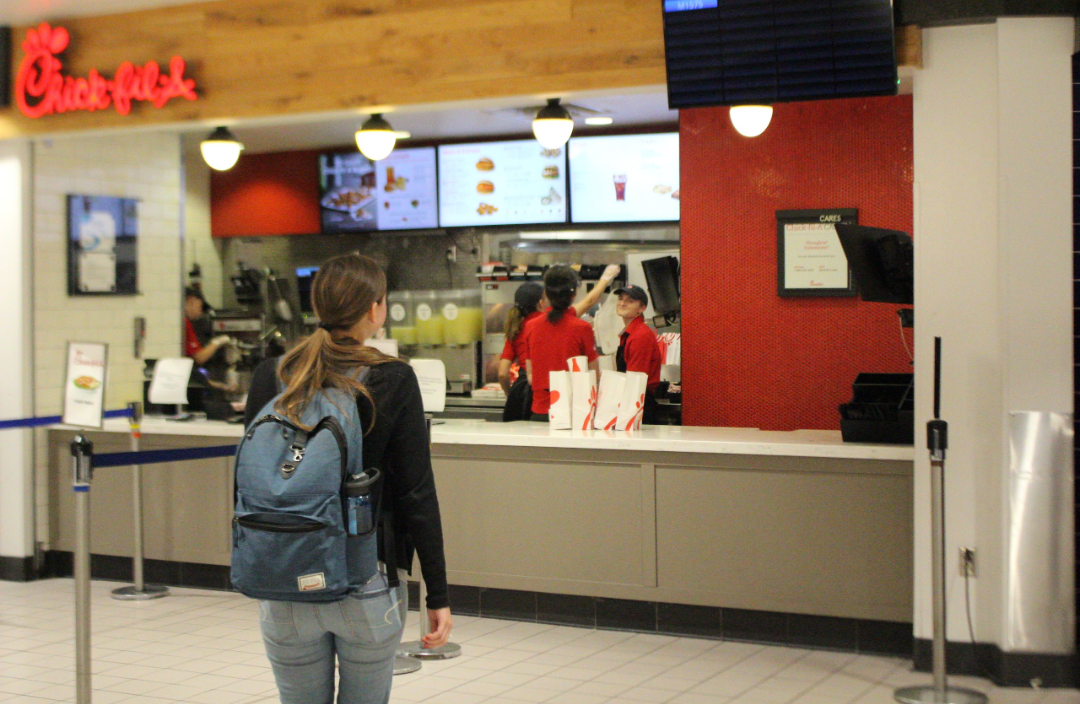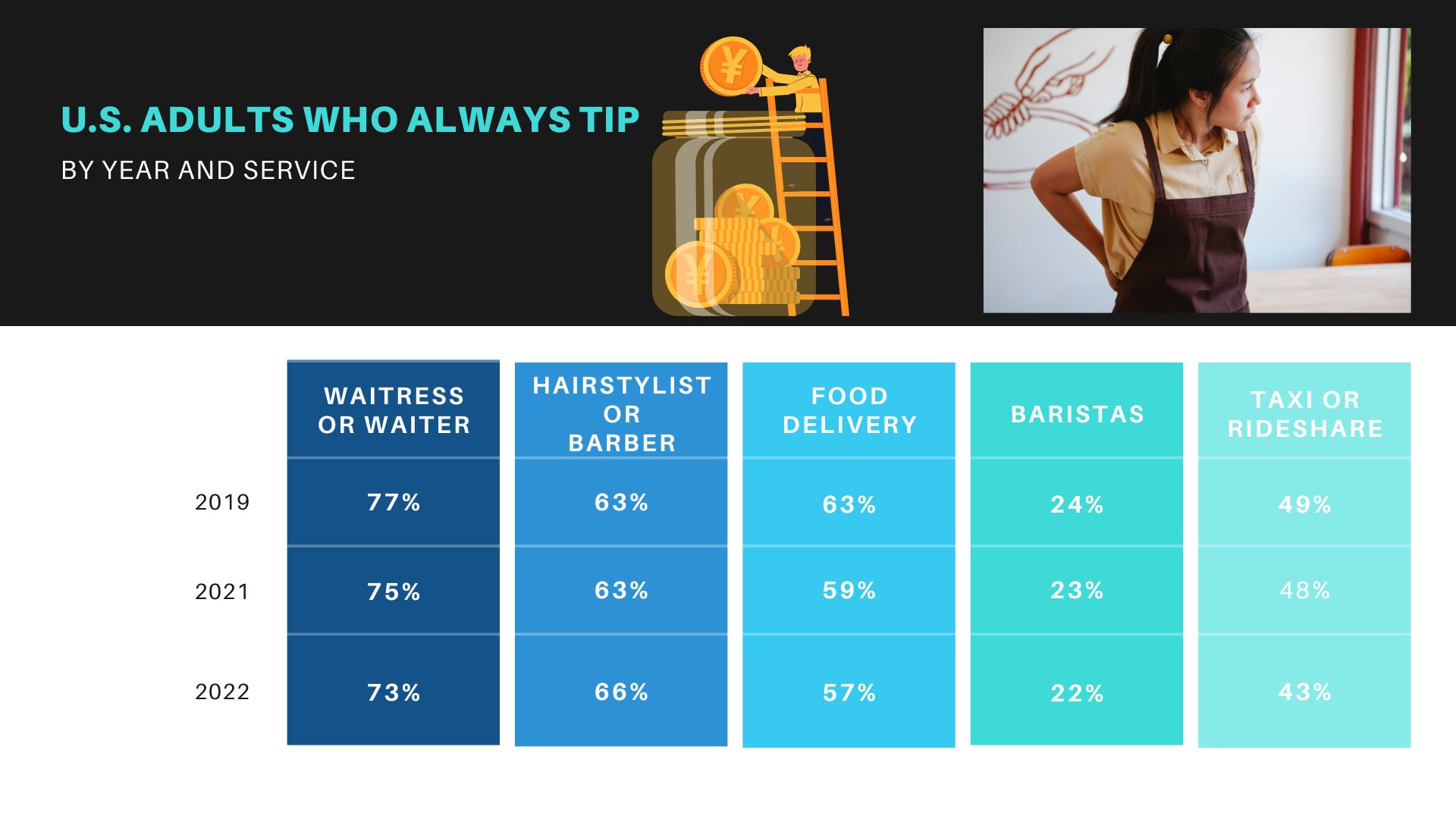
Service workers spoke out about the implications of new data showing tipping has declined after the COVID-19 pandemic.
Data published by CreditCards.com, which surveyed 2,610 American adults on their tipping habits in 2022, showed Americans are worse tippers in recent years.
“I think people in the service industry, especially waiting tables, make their money mainly from tips and it should not be so upsetting to people when they’re asked for them,” Emma Doyle, a waitress at the Mandarin Restaurant in Rexburg, Idaho, said.
The data from CreditCards.com showed tips to servers have steadily decreased from 77% in 2019, to 75% in 2021, to 73% in 2022.
Doyle explained this decrease is a problem for waitresses like herself who work at bigger restaurants because tips are often their main source of income.
“What most people don’t realize is servers are only making two to three dollars an hour so tips are the only way we can get up to making at least minimum wage,” BYU student and former waitress Eliza Wright said. “Tips are not extra on top of our hourly pay, they are our hourly pay.”
Wright explained she feels like people should treat, and tip, their servers well because it is not their fault the industry is set up so their employers rely on tips to pay them what they should be paid.
A study from the Journal of Contemporary Ethnography said in other areas of the service industry outside of sit-down restaurants, tipping has become routinized and is a tradition where the meaning behind it is no longer significant.
The study said the tip calculators on the counters of coffee shops and fast food restaurants mirror this trend because they only take the bill size and tip percentage into account rather than the meaning behind the tip.
“I always appreciate it when people tip me, but I also just appreciate when people are kind,” Doyle said. “If you don’t leave a tip, at least be nice.”
Doyle said although overall tipping and the enthusiasm behind it has decreased, almost every table she waits on still tips her something.
The study also said customers who are asked to pay tips for services which do not require a large amount of service feel like tips have been disassociated with the quality of service they receive and they pay mainly out of a desire to avoid accusations from others of being cheap.
“I received tips for almost every order, but their idea of tipping was not always the typical 15%-20%,” Wright said. “I would sometimes be left a few nickels or what seemed like was the spare change in their pockets.”
Doyle said when she goes out to a sit-down restaurant, she always tips 20% or more because she knows how it feels to not get tips. However, when picking up a drink or ordering takeout, she is far less likely to tip.
“I never expected tips at my job because I understand a lot of people don’t understand tipping culture but I was always grateful when someone tipped me,” Wright said. “People don’t realize how rough of a profession serving is.”
Tipping guidance from national etiquette expert Diane Gottsman said in a sit-down restaurant, guests should tip a minimum of 15% to 20% or more, with the same guidelines applying to taxi or ride-sharing services.
Gottsman’s tipping guidance also explained at a self-service buffet, guests should tip one to two dollars per guest. If you are getting your meal delivered, it said you should tip a minimum of 20% or $5, whichever is higher.
“I don’t really ask for tips, but sometimes parents will give them to me anyway and as a college student, I always appreciate a little extra help,” Briella Smith, a children’s swimming instructor and BYU student, said.
Smith explained there are benefits to tipping, including better service.
“If someone tips me, I definitely try to repay them by spending extra time with their kid or being more friendly in my interactions with them,” Smith said. “If they’re late picking them up or their kid needs a little more attention, I’m a lot more flexible with them.”
Smith said generosity is not overlooked in the service industry, because of the difficult interactions with unpleasant customers and the long hours they endure.
The study from the Journal of Contemporary Ethnography said there is a global trend toward eliminating tipping in favor of wage increases, and there “appears to be a growing awareness of the absurdity of maintaining what is essentially a voluntary, compulsory service fee.”
The study also said in areas of the service industry where customers are receiving direct attention from a laborer, tipping is seen as a customer’s gratitude for their efforts and as a way to show them appreciation.
However, it also argued more people are starting to see workers in certain areas of the service industry such as fast food workers and baristas asking for tips as unnecessary and overbearing.
“Service economies are largely predicated on the expectation the power in service exchange lies with the consumer,” the study said. “However, the social power and institutional backing of service providers can undermine this notion.”
The study went on to explore interpersonal manipulation in the fast-food industry when it came to tipping, and found gratuity varies in how voluntary it is based on how service providers shape the relationship. The study found the relationship expectation of always asking for tips has negatively affected how many people see the fast food industry.
“I think there has been a rise in people asking for tips because they just need the money,” Doyle said. “If you have the money to go spend a bunch of it going out to dinner, then you should have money to tip your server who worked hard to help you.”
Doyle said she thinks the COVID-19 quarantine got people out of the habit of tipping. She said she has seen more people after the pandemic who are reluctant to tip.
The data report from CreditCards.com cited inflation caused by the pandemic as an underlying cause of the decrease in tips.
“I think of those fast food workers who had to go out and interact with so many people all day long during the pandemic while other people were safe at home,” Smith said. “It is hard to believe they were getting fewer tips for being there during such a hard time.”
Smith said she has been surprised to see a decrease in tips after the pandemic as well because so many people were stuck inside due to the COVID-19 virus. She said she expected people to be going out to enjoy themselves and be generous with service industry workers.
Wright said where she was working in Philadelphia, she did see an inflation in tips right after quarantine.

“When people were finally able to go out again, they were just happy to be back and it was reflected heavily in their tips.” Wright said. “A part of me feels like they were saying, ‘Thank you for coming back to serve us, we know how hard it has been for you to not have a job for so long.’”
Wright said her advice to people who are bothered by tipping culture is if people do not want to tip, they should not eat out. She said for people who are concerned about the cost, the best solution is to do the work at home so they have to pay for the service charge.
However, the study from CreditCards.com showed this attitude varies depending on the service. The data showed in 2021, only 17% of U.S. adults reported tipping for takeout, which decreased to 13% in 2022 compared to 77% tipping servers at sit-down restaurants in 2019 and 73% in 2022.
“I think a lot of people are bothered by service workers asking for tips, but when you look at those families or the students who are working these long shifts for terrible pay who need the money to survive, I think it is just about looking beyond yourself,” said Doyle.
Data from CreditCards.com showed only 7% of people who encounter suggested tip amounts at a coffee shop, food truck or other quick-order restaurant where workers are paid at least minimum wage hourly are inspired to tip more, while 12% tip less as a result.




